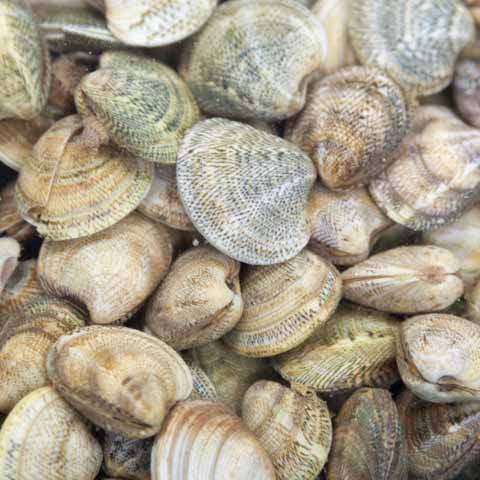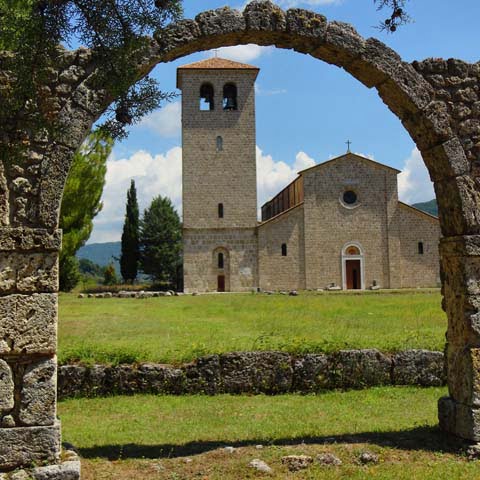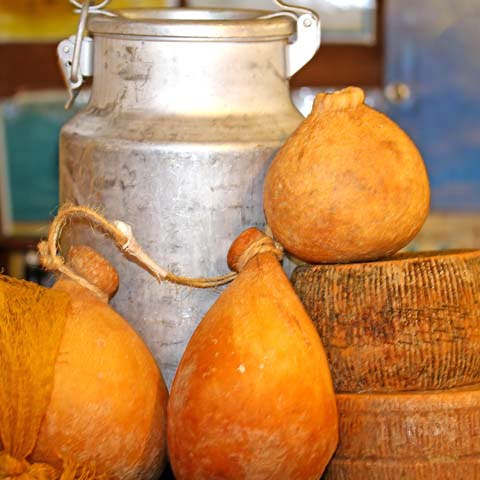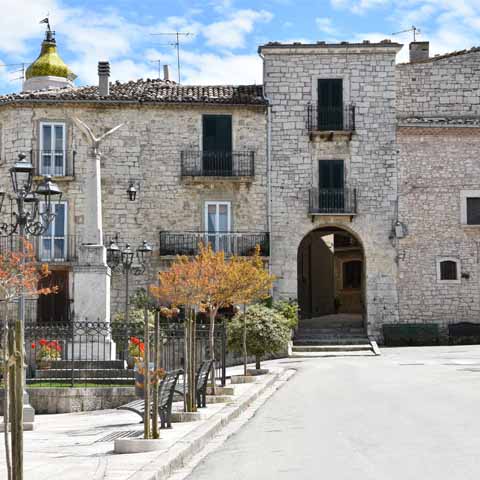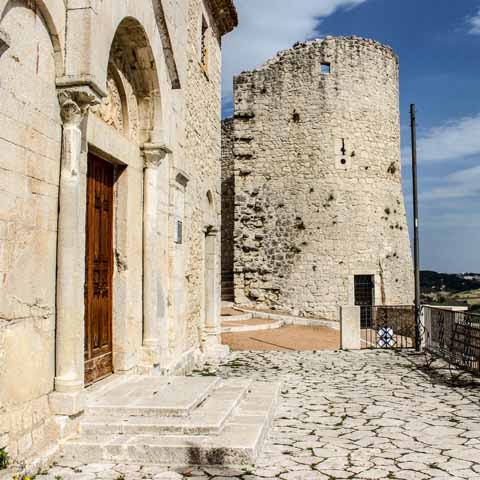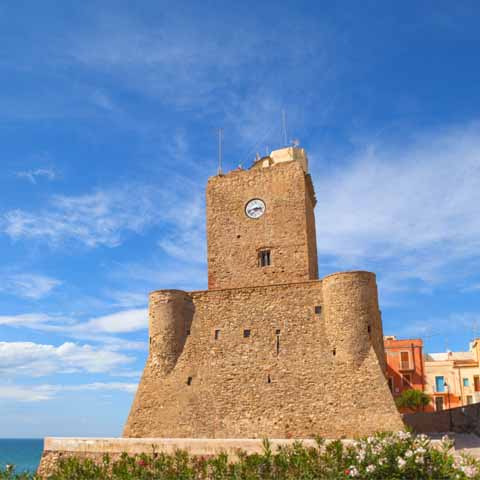Considered a bit of a hidden gem in Southern Italy, Campobasso has its own unique culture to offer visitors. The city provides a quaint Italian ambiance away from the crowds and traffic found in larger cities such as Rome and Milan. With the picturesque surroundings as a backdrop, visitors can explore the historic strength of Campobasso’s architecture and many forms of artistry.
Located in the province of Campobasso in the Molise region of Italy, the city of Campobasso is well-known for its history in the craftsmanship of cutlery such as scissors and knives. While the industry is not the core of the city anymore, the local culture remains strong. This strength is evident in both parts of this divided town – the “old,” heavily deserted land with its historic
Castello Monforte and Museum of Archaeology and the “new,” constructed outside the city’s walls in the lower valley. While the locals currently focus less on producing fine cutlery, they continue to prove their production capacity in soap, cement, and various textiles.
ART
Works of art throughout the city represent the past and present. Just outside the well-known Monforte Castle, guests can visit the Church of Santa Maria del Monte. As with many of Italy’s historic churches, there are breathtaking frescoes to view on the inside. These in particular were created by a Campobasso native, Amedeo Trivisonno in the mid-1940s. A wooden sculpture of the Incoronata created during the 1300s can also be found on site.
The Samnite Museum of Archeology offers its own variety of artwork. The impressive exhibits represent the talents of the pre-Romans, namely the Samnites. From metal work and ceramics to blown glass and jewelry – the range of art mediums on display provides a glimpse into the city’s culture and traditions.
For those fortunate enough to be in the city during the annual International Draw A Line Graffiti and Street Art Festival – it is an event that should not be missed. Since 2011, global artists have gathered in Campobasso to paint artwork on an unusual canvas – the walls of city buildings. Visitors can watch the art in progress and enjoy the colorful murals in varying styles once they are complete.
ARCHITECTURE
The focal point of the city’s architectural landscape can be found on the city’s highest hill – the well-known Castello Monforte. The impressive rectangular structure was restored in 1458 by Count Nicola II Monforte over pre-existing ruins. A single square tower stands at one end and circular turrets are found along the top. The basement of the castle was once used as a prison, but now stores the city’s water. Windows are limited and quite small for added protection as a military lookout. While the entrance to the castle was initially built facing the city, it can now be found on the square. On the inside, visitors can walk through the open-air courtyard at the center where events are often held during the summer months including a re-enactment in August.
Devastating earthquakes left much of the ancient architecture in pieces. The importance of the buildings to the city was evident in those that were rebuilt over time including: the Church of San Giorgio, the Church of Santa Maria della Croce and its distinctive dome, the Church of San Leonardo, and the Cathedral of Santa Maria Maggiore.
Visitors can see portions of the original structures as well as full renovations or new additions to many of the city’s historic structures. A 26-foot bell tower was added to the Church of Santa Maria del Monte in 1970 and the Church of San Leonardo saw the addition of a stairway at its entrance. Each building is a visible piece of Campobasso’s history and cultural past.
Also of interest are the city’s numerous historic palaces. One example is the Royal Civil and Criminal Court Palace, which was built during the eighteenth century. Per its name, the palace once served as Campobasso’s civil and criminal court, and the basement served as a prison where the accused would be held prior to their trial. Additionally, Japoce Palace dates back to the seventeenth and eighteenth centuries when it served as the residence of the Japoce Barons of Campobasso, while Cannavina Palace, which was constructed in the eighteenth century, is renowned for its Baroque Portal.
LITERATURE
Though Campobasso has not been a hub for literature, the city has been the launching pad for successful professionals in the industry. Author and professor Filippo Salvatore was born near the capital city in 1948 and is known for his written pieces in the United States, Canada, and Italy. He went on to become a professor of Italian Literature at Concordia University and author of numerous books in both English and Italian.
CINEMA
The big screen has also seen its contributions from Campobasso with natives such as Alberto Bonucci, an Italian actor who contributed to over 50 films during the 1950s and 60s including Clandestino a Trieste (1951) and La contessa di Castiglione (1954), and Renato Izzo – an Italian screenwriter, actor, and voice actor. Izzo was most famous for dubbing the works of stars such as Clint Eastwood and Paul Newman as well as overseeing the dubbing of over a thousand films, including Taxi Driver (1976) and Apocolypse Now (1979). In 1980, he started the Pumais Due Society – an organization to help the careers of fellow film dubbers.
The locals are also said to have bragging rights as the origin of Robert De Niro’s great-grandparents, Giovanni Di Niro and Angelina Mercurio. They came to the United States in the late nineteenth century from Ferrazzano – a nearby town in the province of Campobasso.
A few movies have also been filmed in the province of Campobasso over the years, including Il prezzo dell’onore (1953), Sole a catinelle (2013), and Il viaggio (2017).
SCIENCE
Founded in 1982, the public University of Molise has locations throughout the region with its headquarters right in Campobasso.
In the beginning, the college focused its course offerings in Agricultural Science, yet the early 2000s brought substantial growth to the student population and areas of study. Now, over 10,000 students come from all over Europe to study at one of the university’s schools including Natural Sciences, Engineering, Wellness Sciences, and Medicine and Surgery. The latter was introduced as recently as 2006. A Scientific and Technological campus was developed in order to draw focus to the university’s dedication to the business and research sectors.
MUSIC
As with most Italian cities, Campobasso has its own music scene that visitors can enjoy. The city has a lengthy concert season that typically focuses on the period from October to March, yet musical performances can be found year-round. Concerts are often put on by one of the Regional Symphony Orchestras as well as solo musicians. Travelers to the city can head to the Teatro Savoia (Savoy Theater) – the main music venue of Campobasso – to see what performances are available during their stay. While enjoying the music, the beauty of the theater itself should not be missed. Originally constructed in 1894, the building has seen its share of additions and renovations including stained glass windows and frescoes. It is currently owned and maintained by the Province of Campobasso.
Music prodigy Tito Mattei was born in Campobasso in 1841. His impressive career started with his very first concert in 1846 at the young age of 5. This was followed by a tour throughout Europe and at the age of 11, Mattei was named a professor at the Accademia Nazionale di Santa Cecilia in Rome. He went on to achieve fame as a pianist, composer, and conductor prior to his death in 1914.
Campobasso, the capital of the Southern Italian region of Molise, offers a variety of interesting sights for cultural travelers. The city can be characterized by its stunning art, archeology, historic architecture, and long-standing music traditions.Travel Guides
The Molise Region of Italy
The Cities of Molise, Italy
